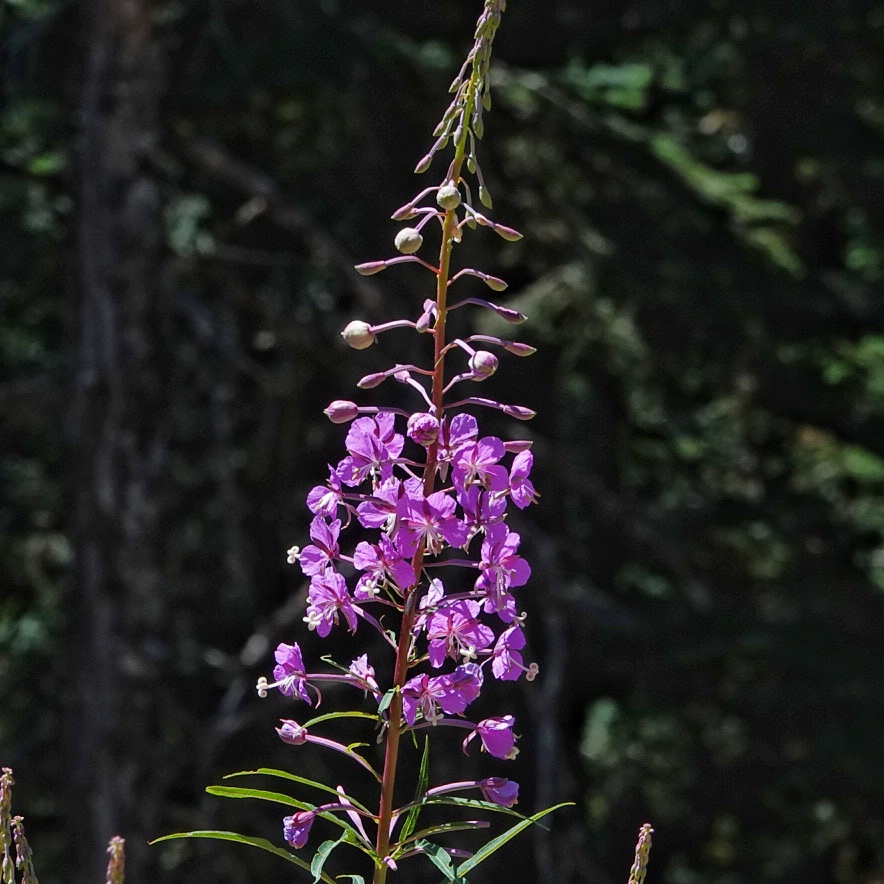
This beautiful member of the family Onagraceae (willowherbs and evening primrose) is known as fireweed in most of western North America. But as a circumboreal species it has different common names in other locales, such as great willowherb, rosebay willowherb, and bombweed, the last one due to its rapid recolonization of bomb craters after The Blitz of WWII. Our common name fireweed refers to the fact that this species recolonizes an area very quickly after a fire. As an example of how effective it is, one year after the eruption of Mt. St. Helens 81% of the seedlings in the blast zone were fireweed.

There are a variety of reasons why fireweed is so effective at repopulating highly disturbed ground, but one of them isn’t that they have a latent, long lived seed bank awaiting germination in the soil, since the seeds lose viability in 18-24 months. But they do have airborne seeds, and a single plant may produce up to 80,000 seeds per year. An interesting facet of the seed structure is that high humidity will cause the seed hairs to contract, allowing them to fall in moister, more germination friendly areas. Fireweed requires bare mineral soil, abundant sunlight, warm temperatures, and high humidity to germinate, but once a plant is established it also reproduces via rhizomes and often forms large colonies. The rhizomes can be up to 20’ long, and disturbance and breaking of those rhizomes promotes shoot production, which is another reason it recolonizes clear cuts so quickly after the violence of the logging operation.
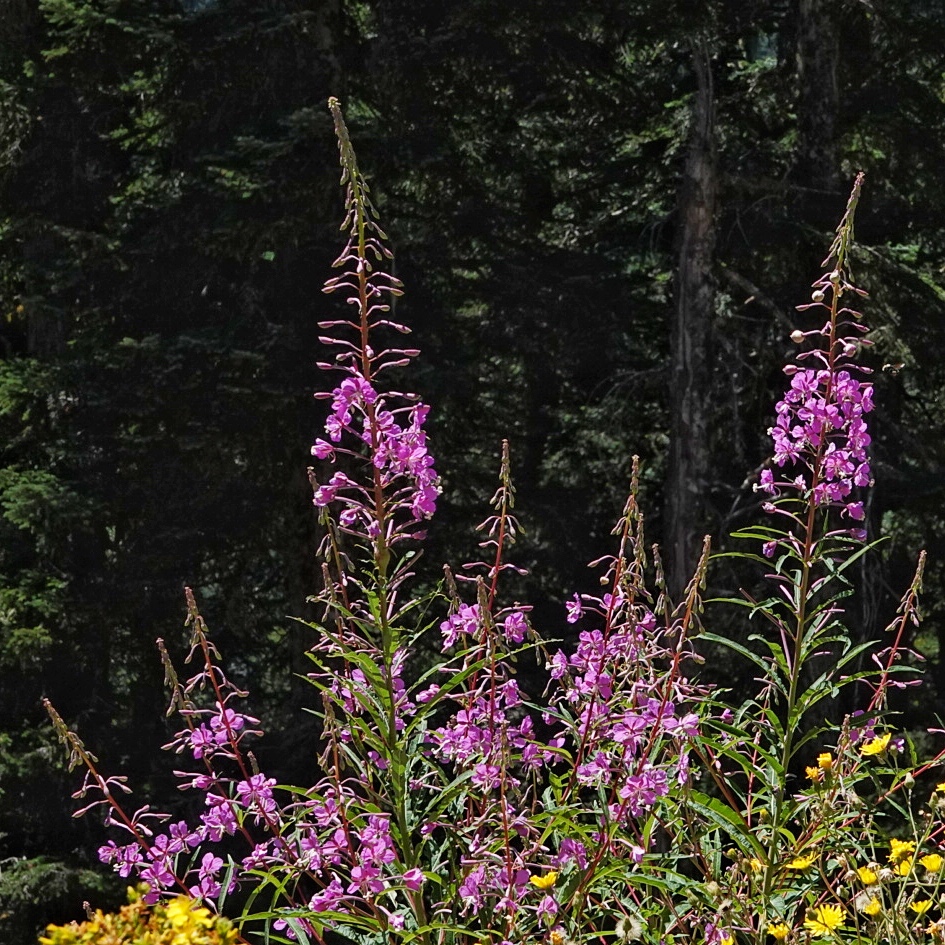
Not surprisingly for a species known to grow abundantly at times, and one found throughout the northern Northern Hemisphere, indigenous peoples have found many uses for this plant, and many modern foragers still utilize it. As a foodstuff they ate the roots, young shoots, young stems, and tender greens (all of which are high in vitamins A and C), either raw or cooked, and cultures in the far north preserved them in seal oil for winter rations. They also boiled the roots and leaves for tea, and used the pith from the stem as a sweetener.
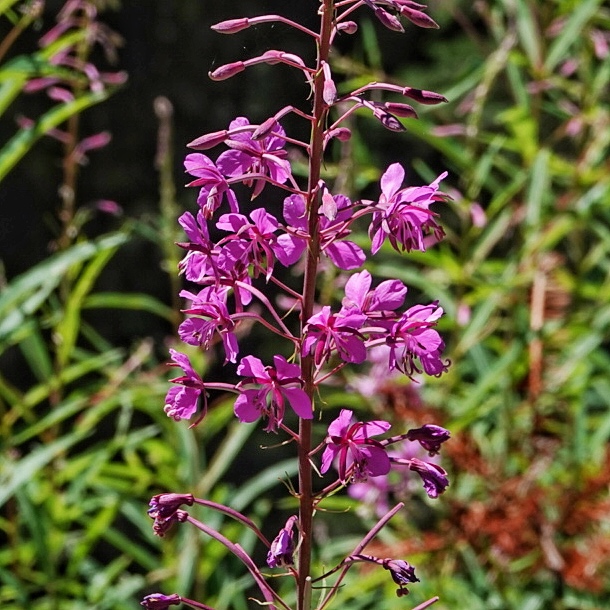
But it was as a medicine that they found the most varied usages for this plant. They used the roots in a variety of preparations to treat coughs, sore throats, tuberculosis, kidney ailments, prostate problems, boils and other skin diseases, and knee and other joint problems, and mixed them with the pith as a laxative for infants. They used the leaves for bowel bleeding, stomachache, as a laxative, and topically for bruises. The twigs, roots, and bark, either separately or mixed, were used as a general analgesic. A decoction of the whole plant was used to wash wounds and to bathe invalids, and a mixture of the seeds, down, and oil were applied to incised tumors.

In addition to all of these usages fireweed also had utilitarian purposes. The pith was rubbed on hands and face to protect them from the cold, and the flowers were used to waterproof mittens and rawhide. They used the stem fibers for sewing, making fishing nets, and braided them for cordage, and the downy seeds were mixed with feathers or dog hair to make a form of wool for blankets. They also burned this plant to smoke fish, and to drive away mosquitoes. And, though I’m not sure if this qualifies as utilitarian, they used a decoction of the whole plant to bathe figurines that were used in magic, possibly as some sort of voodoo doll.
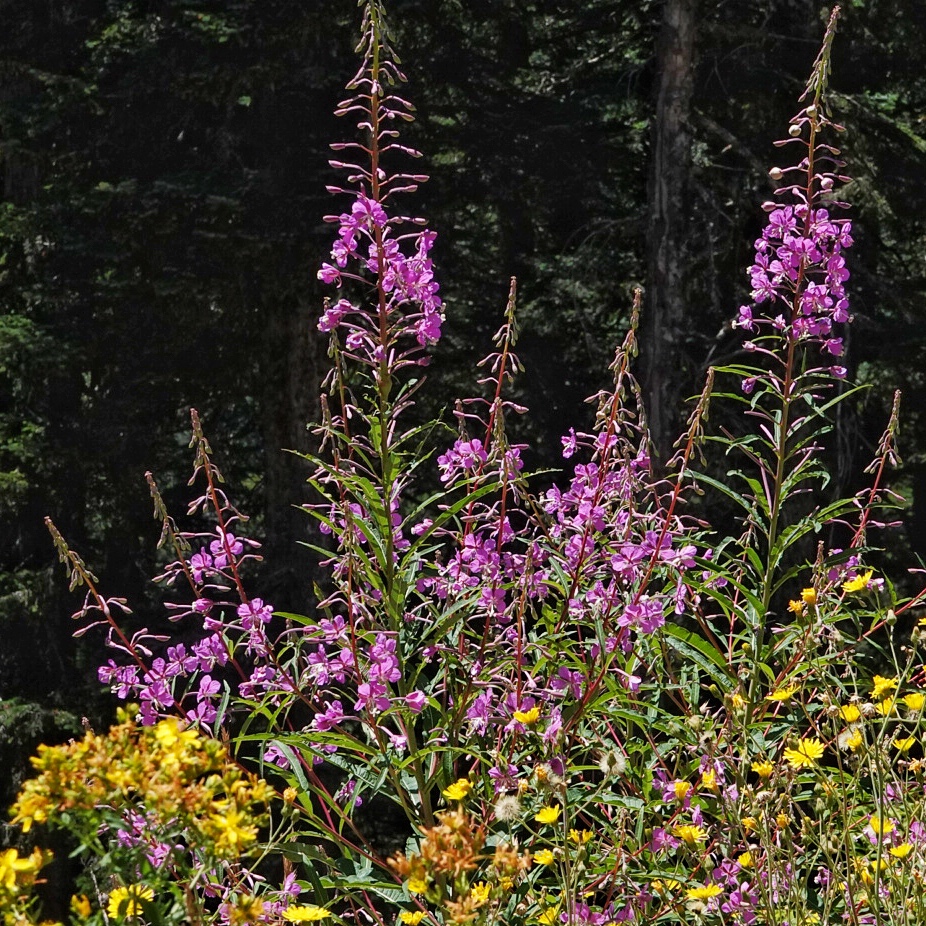
For those interested in the taxonomy of this species, it used to be in the genus Epilobium. The morphological differences between the two genera are that Chamaenerion does not have notched petals, or a floral tube, its stamens and styles are reflexed rather than erect, the leafs are alternate to whorled, and the pollen is greyish blue rather than white. There is some controversy over the correct name, with some publications using Chamerion, but it seems clear to me that Chamaenerion has historical precedence (plus that’s what they use in Hitchcock and in ‘Flora of Oregon’).
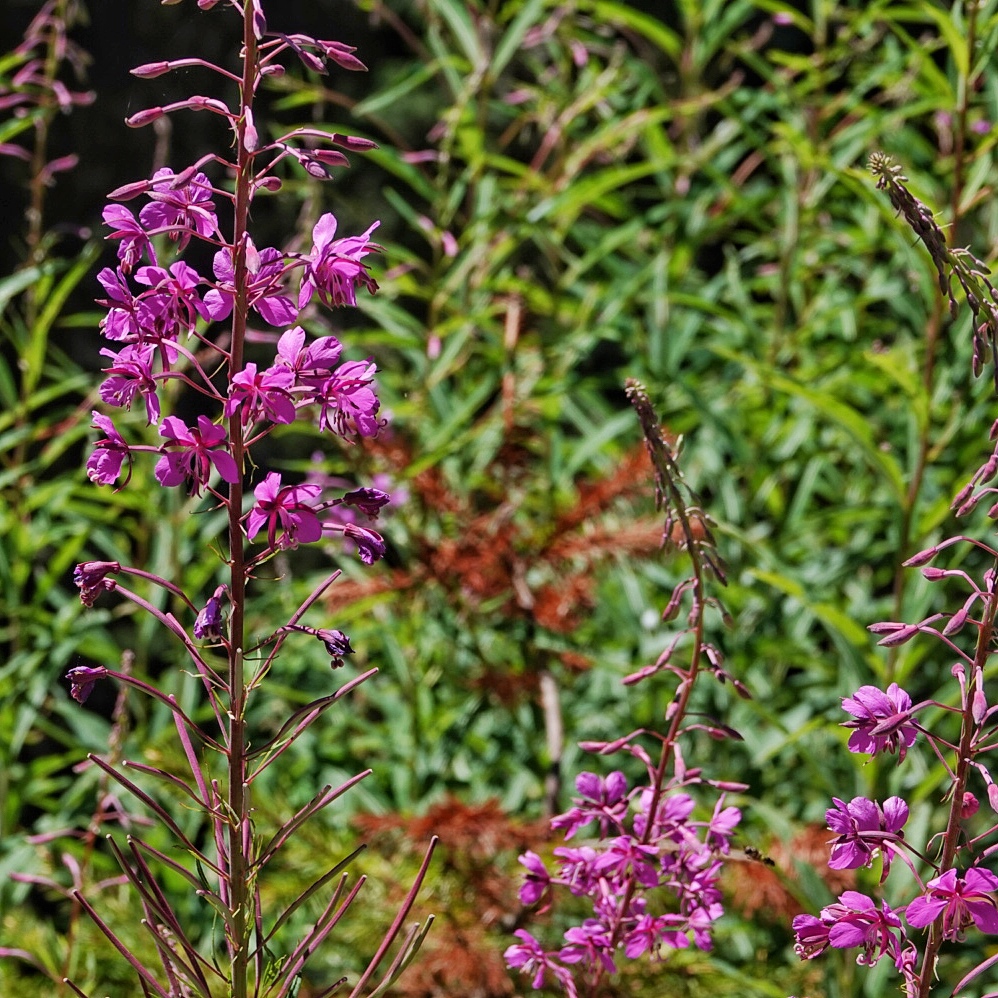
Description– Perennial with erect, unbranched stems up to 5’ tall; alternate, long (up to 8”) lanceolate leaves on short petioles; long flower spike with up to 50 pink to magenta flowers that face outward; flowers up to 25mm wide, with shorter but same colored sepals.
Similar species–Chamaenerion latifolium is much smaller, seldom over a foot tall; Epilobium spp. have much smaller flowers, except for E. luteum which has yellow flowers;
Habitat-Open areas and disturbed ground such as burned areas, clear cuts, road cuts, right-of-ways, up to subalpine.
Range-Northern Northern Hemisphere; region wide in appropriate habitat, but absent from much of the shrub steppe in the arid interior.
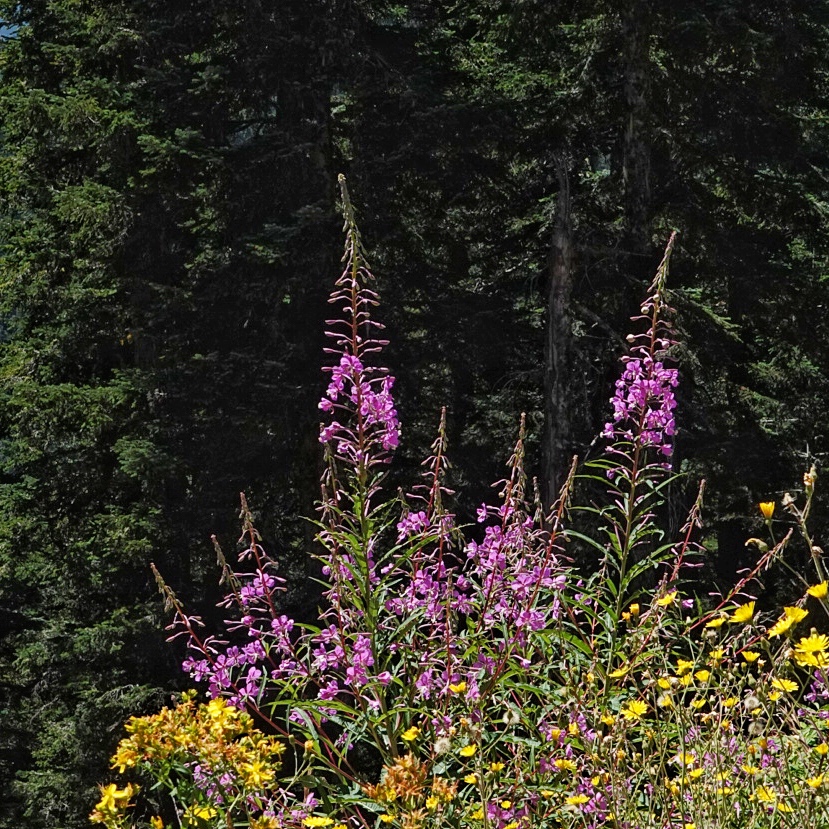
Reproductive timing-Blooms May to September; peak nectar production seems to be around noon, and plants appear to be synchronized to that peak to promote maximum cross pollination.
Eaten by-Larval host for leaf miner moths in the genus Mompha, as well as for the moths Hyles lineata (white-lined Sphinx moth) and Albuna pyramidalis (fireweed clearwing moth); utilized by adults and larvae of several flea beetles in the genus Altica, and the leaf beetles Bromius obscurus and Epitrix hirtipennis; several different species of aphids feed on this plant; nectar and pollen feeders and primary pollinators are long tongued bees, including Bombus spp. and Megachile spp.; other bees and Syrphid flies visit mostly for pollen; It is a preferred browse for bears, deer, moose, elk, mountain goats, pikas, chipmunks, snowshoe hares, and other mammals.
Etymology of names–Chamaenerion is from the Greek for ‘low growing oleander’, which doesn’t really make sense to me since C. angustifolium is the type species of Chamaenerion, and it is hardly ‘low growing’, and oleanders are in a different order altogether (Gentianales), though they do have similar leaves. The specific epithet angustifolium is from the Latin for ‘narrow leaved’, which certainly describes fireweed.
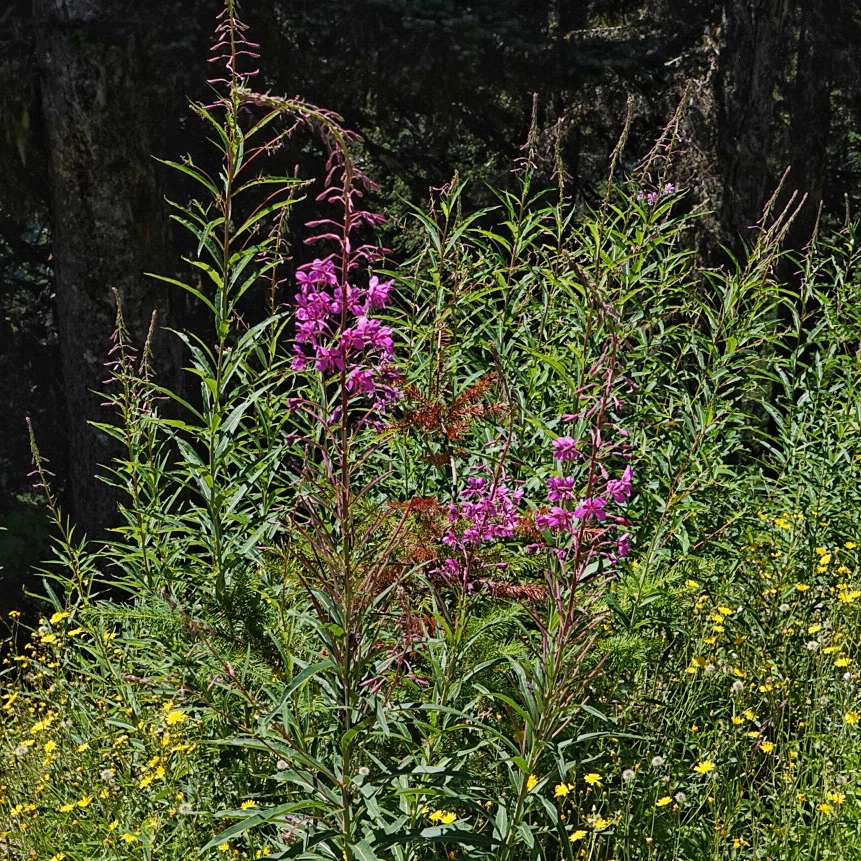
http://www.illinoiswildflowers.info/prairie/plantx/fireweedx.htm
https://www.fs.fed.us/wildflowers/plant-of-the-week/chamerion_angustifolium.shtml
http://www.missouribotanicalgarden.org/PlantFinder/PlantFinderDetails.aspx?taxonid=297622
https://www.fs.fed.us/database/feis/plants/forb/chaang/all.html
http://camashill.blogspot.com/2008/10/fireweed.html?m=1
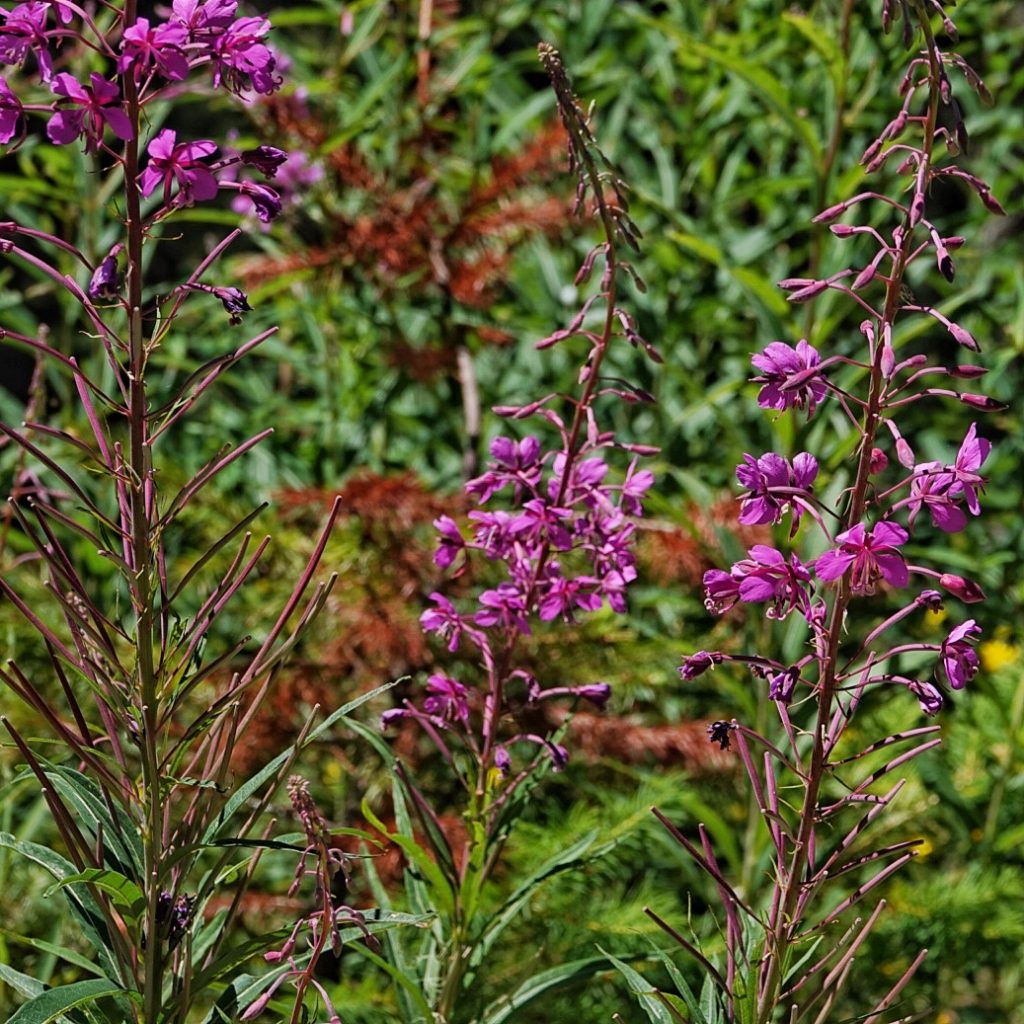
Thanks, Dan! Bountiful descriptive, healing,serene in a way that only soft things of the pnw be. And to quote Jeremiah Johnson..you’ve come far pilgrim
Thanks Black! And to quote Robert Frost ‘…and miles to go before I sleep’.
I see fireweed along the highways, I would like to get some planted on a dry, mineral hillside in my yard… what is the best way to get them to grow where you want them… transplant them in the fall? find seeds and try to get seeds to grow in the spring? where would I get seeds, I suppose I can try to get them from some plants along the roadsides?
I’m no gardener, so I can’t help. Sorry. When I was looking for info there were several gardening sites that popped up. If you google Chamaenerion angustifolium you should find some answers. Good luck!
oh ok! thank you!